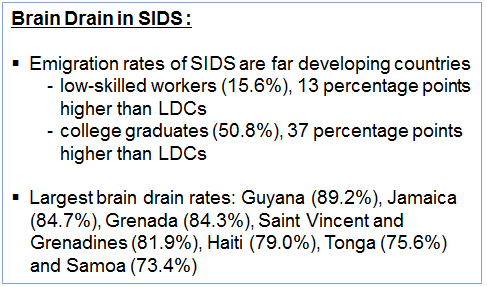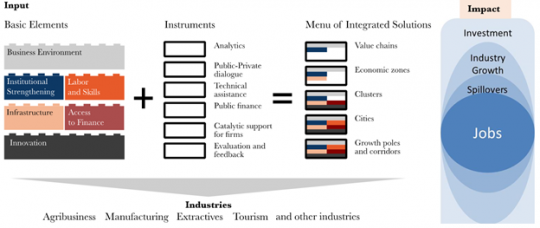The United Nations has declared 2014 as the International Year of Small Island Developing States (SIDS), in recognition of the contributions this group of countries has made to the world, and to raise awareness of the development challenges they confront – including those related to climate change and the need to create high-quality jobs for their citizens.
The Third International Conference on SIDS in September in Apia, Samoa will be the highlight event. The World Bank Group is helping shape the debate on both climate and jobs with a delegation led by Rachel Kyte, the Group Vice President and Special Envoy for Climate Change, and with senior-level participation in the conference’s Private Sector Forum.
Is the global jobs agenda relevant to small islands states?
Tackling the challenges related to the jobs agenda in large and middle-income countries could be seen as the most significant issue for the Bank Group’s new Trade and Competitiveness Global Practice, of which I’m a member. Yet the Minister of Finance of Seychelles recently challenged my thinking on this.
At the June 13 joint World Bank Group-United Nations' High-Level Dialogue on Advancing Sustainable Development in SIDS (which precedes the September conference on SIDS), the presentation by Pierre Laporte, the Minister of Finance, Trade and Investment of Seychelles – who is also the chair of the Small States Forum – led to a lively discussion on various job-creation and growth models that the SIDS countries may want to pursue.
The sentiment among SIDS leaders was that one-size-fits-all solutions will not do when it comes to jobs and growth. Yes, they do want to continue to address the tough fiscal challenges they face, but they want to tackle them while creating job opportunities for their citizens.
Decades of reforms have not helped SIDS grow at a rate similar to the rest of the world: On average, their pace of job creation is about half the global rate. The lack of opportunities felt by many generations resulted in a heavy “brain drain” that exceeds the level seen in other developing countries.
It is becoming very clear that business as usual in SIDS will not do. Creative solutions need to be found now.

In thinking more about specific growth strategies, the question is not so much about finding the value chain that will make one country relatively more competitive as compared to another, but to try to really understand the unique ambitions and differences of each one of them, and to adapt the growth strategy to those unique circumstances.
Not every country will become the next tourism hub or will host the next container hub. The big question is how to deal with this, and how to enable SIDS to grow, create jobs and create promising future for their citizens?
Not all islands are the same
What characterizes SIDS is the heterogeneity of the development challenge. It is somewhat unfair, and also too simplistic, to lump all these countries in the same economic-development category. Yet, there are some common challenges, which can be approached with similar tools.
While the areas of interventions identified in the table seem broad, the message behind it is about the government's willingness to embark on a process that will lead them to identify their future area of growth, and then address the challenges in a systematic way. But of course this is not enough. Can growth-specific strategies be designed?
What this table suggests is that growth and job creation can come from a variety of policy changes. What is relevant for SIDS is not necessarily the scale nor the complexity of one area of reforms – such as getting the best “Doing Business” indicators, or getting the infrastructure just perfect – but the ability for a country to sequence and bundle all these reforms in a way that will make the private sector more comfortable to invest.
Empirical evidence – from East Asian economies, from the U.S. economy after the financial crisis, and increasingly also from Africa – is showing us that industry-specific approaches are more likely to produce results than not.
While some countries will see their future in attaching themselves to a global value chain through regional integration, better connectivity and specific training – as in the case of Mauritius in high-end garment manufacturing and in financial services – others will prefer to focus on strengthening local production to serve local markets only, thus leading to a different type of economic fabric.
What will be common in both cases will be the capacity of each state to sequence and bundle the reforms to make this happen. This approach drives us far away from any type of traditional “growth dogma” and clearly brings us closer to a “solutions design mode” that will be pragmatic and adapted to the unique challenges that each of these economies is facing.
This is what we intend to discuss at the SIDS event in Samoa in September.



Join the Conversation